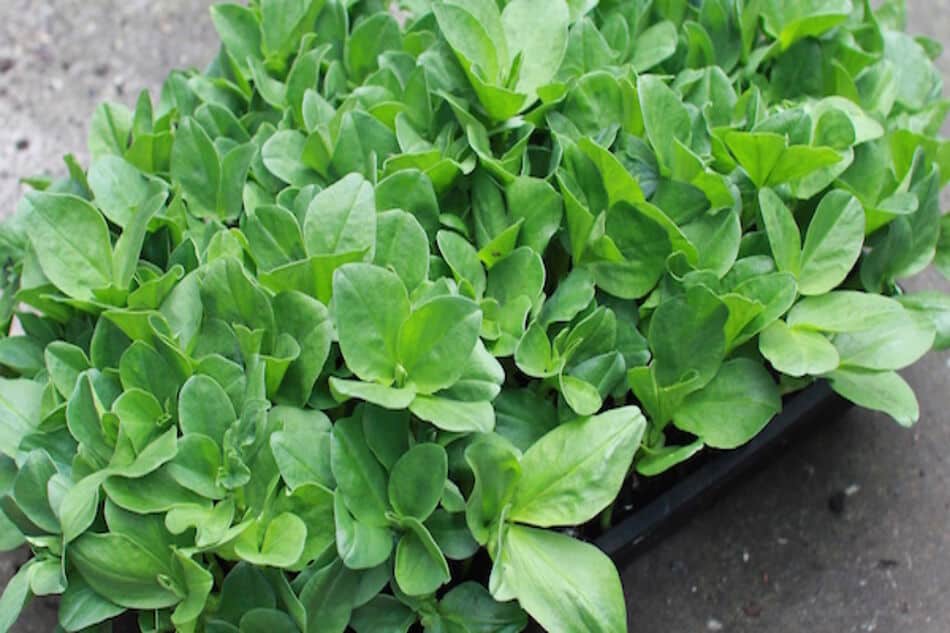Microgreens are good for your health, for they do wonders to your body, your mental health as well as emotional health. But, sadly, they can be expensive to buy from the open market because marketers consider them an ‘unpopular’ food choice among the general population. However, if you’re trying to incorporate healthier food into your diet, fava microgreens are the best place to start. So, in this article, we will teach you how to grow fava microgreens.
How To Grow Fava Microgreens
If you’re looking for a nutritious and flavorful addition to your salads, soups, and sandwiches, look no further than fava microgreens. Fava microgreens are the young shoots of the fava plant, and they pack a serious punch when it comes to nutrition. They’re an excellent source of vitamins A, C, and K, as well as iron and magnesium. In terms of flavor, fava microgreens have a grassy taste with a hint of bitterness. Fortunately, growing fava microgreens is a relatively simple process that doesn’t require much in the way of equipment or experience.

All you’ll need is a shallow container filled with potting mix, some fava seeds, and a warm location that receives indirect sunlight. Once you’ve got your supplies gathered, simply sow the seeds on the surface of the potting mix and lightly mist them with water. Keep the soil moist but not soggy, and within a few days, you should see the first signs of growth. Thin the seedlings to one per inch once they reach about 2 inches tall, and then harvest them when they’re 4-6 inches tall.
I’ve told you about how to grow fava microgreens rather succinctly, let’s talk about growing fava microgreens in more detail, shall I?
How To Grow Fava Microgreens
Step-by-Step Process
Microgreens are young greens that are harvested when they are about 2-3 inches tall. Fava microgreens are a type of microgreen that is known for their nutty flavor.
These microgreens can be used in salads, soups, and garnish. If you are interested in growing fava microgreens, here is a step-by-step guide:
1. Start by soaking fava beans in water for 24 hours. This will help them to germinate.
2. After 24 hours, drain the beans and spread them out on a damp paper towel.
3. Fold the paper towel over the beans so that they are covered and place them in a dark location such as a cupboard or closet.
4. Check on the beans every day, and when they start to sprout, remove them from the paper towel and plant them in potting soil.
5. Water the soil regularly, and in about 7-10 days, your fava microgreens will be ready to harvest.

Some Interesting Facts About The Fava Microgreens
Microgreens are a type of vegetable that is harvested when they are young plants, usually between 1-3 inches in height. The term “microgreen” was coined in the early 1990s by Dr. Alan Kapuler, a plant scientist, and since then, they have become increasingly popular among chefs and home cooks alike.
Microgreens are packed with vitamins, minerals, and antioxidants, and they have been shown to have more nutrient density than their mature counterparts. In fact, a study published in the Journal of Agricultural and Food Chemistry found that red cabbage microgreens had 40 times more beta-carotene than mature red cabbage leaves!
Health Benefits of Fava Microgreens
Fava microgreens are a type of edible green that is produced from the fava bean plant. The greens are typically harvested when they are 7-14 days old, and they can be used in salads, sandwiches, and other dishes. While fava microgreens are not as widely known as other types of microgreens, they offer a variety of potential health benefits.
For instance, fava microgreens are a good source of vitamins A and C, which are important for immunity and skin health. In addition, they contain polyphenols, which are antioxidants that can protect cells from damage.
Furthermore, fava microgreens have been shown to reduce inflammation in animal studies. While more research is needed to confirm these effects in humans, fava microgreens may offer a variety of potential health benefits.
Why Should You Grow Your Own Fava Microgreen?
Fava beans, or Vicia faba, are a type of bean that is native to Africa and Asia. The plant is part of the legume family, which also includes lentils, chickpeas, and peanuts. Fava beans have been cultivated for thousands of years and were even mentioned in the Bible.
Today, they are a popular ingredient in many cuisines, including Italian, Middle Eastern, and Indian. Fava beans are rich in vitamins and minerals, including iron, potassium, and magnesium. They are also a good source of protein and fiber. Microgreens are young greens that are harvested when they are just a few inches tall. They have a more intense flavor than mature greens and are often used as a garnish or added to salads. Fava microgreens are particularly tasty and nutritious.
They can be grown indoors or outdoors and only need a few hours of sunlight per day. Fava microgreens are easy to grow and only take a few days to sprout. You can start harvesting them within two weeks of planting. Growing your own fava microgreens is a great way to enjoy their fresh flavor and nutrients year-round. Plus, it’s an inexpensive way to get started with microgreens and healthy eating.
Conclusion
Fava microgreens are a type of leafy green that is packed with nutrients. They are easy to grow and can be harvested in as little as two weeks. To grow fava microgreens, you will need a shallow container, some potting mix, and a few fava beans.
Start by soaking the beans overnight. Then, drain the beans and plant them in the potting mix. Water the soil until it is moist but not soggy. Place the container in a sunny spot and wait for the seeds to germinate. Once the seedlings are a few inches tall, you can start harvesting them. To do this, simply cut the greens at the base of the stem using a sharp knife.
Fava microgreens are best eaten fresh, so enjoy them immediately after harvest.
Happy eating!

